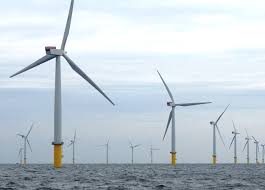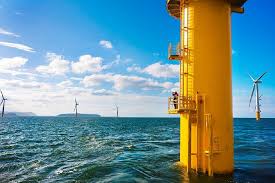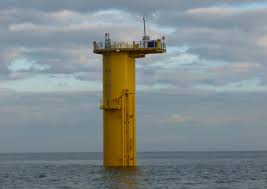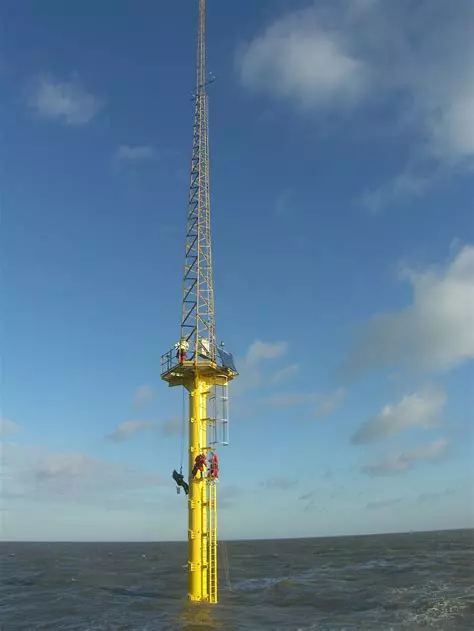
Fatigue resistance of fixed foundations wind turbines.
Besides the potential cost savings related to potential material and welding savings it is possible to apply the ultrasonic peening technology to extend the service life of wind turbines already in use and which probably have already reached their fatigue design service life. As it is the case with other type of offshore structures to possibility to carry out remedial fatigue maintenance or simply extend the service life of such steel structures offshore will imply considerable maintenance cost savings.
Light weight design
The design of foundation structures for offshore wind turbines is governed by fatigue. To achieve a cost effective design, it is necessary to select a tower diameter that is large enough to reach the desired natural frequency, but preferably small enough to be less expensive. However, a light design tower will be fatigue sensitive reducing its expected service life. In order to increase the fatigue resistance of welds in a lighter design, the ultrasonic peening treatment can be applied. This can either extend the fatigue life in a traditional structure design or help to reduce the wall thickness in a lightweight reducing the amount of steel and weld metal required.
As a guideline the potential reduction of wall thickness could be as much as 30% decrease which could be achieved if fatigue is the only design limitation. However, buckling and tower driving influences the required wall thickness. Therefore a reduction of 10% in the wall thickness and consequently steel weight is considered as feasible.
For an offshore wind farm of 100 turbines, where each tower weights 167 tons, a total reduction of 10% on the tower steel would result in a reduction of 1670 tons. With constantly increasing steel prices any material saving would be very much welcomed. Furthermore, a reduced wall thickness will imply reduced weld metal and welding costs. This could be a significant step in making offshore wind energy more cost effective and environmental friendly.




Floating offshore wind turbines
Floating offshore wind turbines is a field undergoing major development. Many densely populated coastal areas around the world are not suitable for traditional bottom-fixed offshore wind turbines when available wind resources are to be developed for production of wind energy. In other areas the shallow water coast is already developed or under development for such production. Floating wind farms have the potential to significantly increase the sea area available for offshore wind farms, especially in countries with limited shallow waters, such as Japan, France and US West coast, etc. Locating wind farms further offshore can also reduce the visual pollution and allow for better accommodation of shipping lines. Many future wind resource developments therefore naturally imply developments in deeper waters for which floating structures entails an attractive solution for the support of the wind turbines involved. The market for floating wind turbines is expected to grow fast as plans for developing wind farms in deeper waters are many. Furthermore floating offshore wind turbines far fro coastal areas reach stronger and more consistent winds.
Many of the proposed offshore structures for wind turbines resembles current offshore structures used for hydrocarbons recovery. However, these offshore structures will inevitably be subjected to fatigue loads and therefore will have a limited service life due to fatigue damage accumulation. Ultrasonic peening could in such a cases, exactly as proposed for other offshore structures, enhance their fatigue resistance specifically in sensitive weld connections. Furthermore ultrasonic peening could be used as remedial step when a fatigue design does not perform according to the expected.
Furthermore, and as these wind farms are located far from the coast, the possibility to carry out remedial fatigue maintenance or simply extend the service life of such steel structures offshore will imply considerable savings in maintenance cost.
Offshore Met Masts
A measurement tower or measurement mast, also known as meteorological tower or meteorological mast (met tower or met mast), is a free standing structure used to measure weather conditions as temperature, wind speed, etc. These structures could also benefit of ultrasonic peening treatment carried out on site if and when required. That could be done as a fatigue life extension or as a remedial procedure.
These structures could benefit of the ultrasonic peening treatment already at the construction and assembling stage at the workshop. Alternatively fatigue sensitive attachments or weld connection could be treated on station in order to extend their original fatigue design life.

